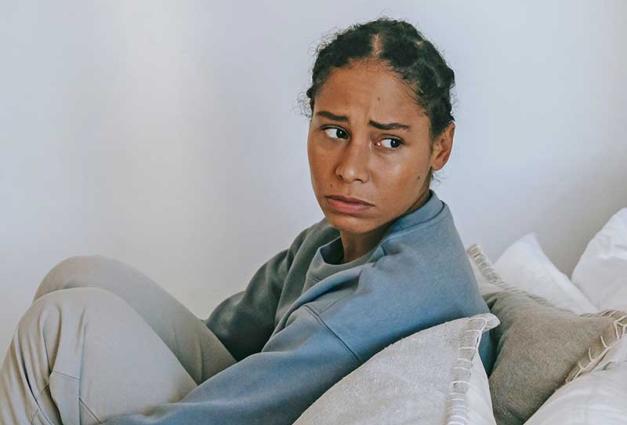When a jury reaches a controversial or unpopular verdict in a high-profile case, the public often wants to know more about that jury. Who are they? What is their demographic background?
In several recent high-profile cases, the composition of the jury has received significant media and public attention. When George Zimmerman—who killed Trayvon Martin, an unarmed Black teenager wearing a hooded sweatshirt—was acquitted, many disagreed with the verdict and began to shift attention to the jurors and their identity. The jury in his case was composed of all women and contained only one person of color.
Many structural barriers to participation on juries result in juries that do not represent their communities—particularly in terms of race and ethnicity. For example, juries are recruited through voter registration records which underrepresent people of color. Even if the methods used to recruit juries were more representative of the community in which the trial takes place, jurors still need to survive the jury selection process. Called Voir Dire (Latin for "to speak the truth"), this process involves the judge and/or attorneys asking jurors questions to assess their ability to be impartial jurors. After the questioning, each side (the prosecution and the defense) requests that jurors be removed from the jury through a series of challenges. While some challenges need to be approved by the judge (for cause challenges) some do not require any justification or approval (peremptory challenges). Although the U.S. Supreme Court has officially prohibited the use of racially based peremptory challenges (in Batson v. Kentucky, 1986), Samuel Sommers and Michael Norton found in their research that college students, law students, and attorneys alike were more likely to remove a Black juror from jury service and were able to easily develop logical reasons for eliminating each juror. This finding may explain why so few attempts to challenge racially biased removals are successful.
When people promote jury diversity as crucial, they often stress its importance as a method to reduce racial bias in jury verdicts. To be clear, this is an important benefit of jury diversity as researchers have found that decreasing the racial diversity of a jury can increase the likelihood of outcomes that are racially biased. Yet, reducing discrimination is not the only benefit that jury diversity provides. In our research, Margaret Kovera and I found that increasing diversity on juries also increases the quality of discussion that occurs in the jury room.
Diversity and the Quality of Jury Discussion
Over the course of two studies, Margaret Kovera and I examined the effects of diversity on the deliberation process of jurors. We examined diversity in two different ways: both racial/ethnic diversity and wealth/power diversity. We wanted to examine not just jury verdicts, but the jury deliberation and discussion itself.
We recorded all deliberations and measured the level of reasoning occurring in each statement. In the first study, 433 Black and White community members viewed a mock trial and then deliberated in juries composed of four to seven jurors. The participants either viewed a stronger or weaker case as to the guilt of the defendant. Would more diverse juries be better able to differentiate between stronger and weaker evidence than non-diverse juries? Actually, no: All jurors/juries rendered verdicts consistent with the strength of the evidence. By analyzing the jury discussion itself, however, we saw that diverse juries had more sophisticated conversations and discussed the evidence at a more advanced level than the non-diverse juries.
For example, when a juror stated "He resisted going out. He didn't get up and go out right away," this was not coded as advanced-level thinking. While relevant to the case, this statement does not analyze the credibility of the statement or make inferences about how this evidence fits in the case. On the other hand, the statement "But there was a discrepancy between the defense attorney and what the defense attorney said. The defense attorney said that he stabbed in self-defense" displays critical analysis of the evidence presented.
In the second study we examined the role of wealth/power diversity, manipulated through a game that allowed our participants to obtain and give out Monopoly money so that some participants—a racially and ethnically diverse sample of 329 undergraduate students—felt (temporarily) more wealthy and powerful than others. We then created some groups where all members were alike in their wealth/power, and some groups where the wealthier and more powerful were mixed with those who were less wealthy and powerful. Our results were similar to those in the first study, with the diverse juries (in terms of wealth and power) deliberating more thoroughly with higher-level contributions in terms of reasoning.
Thus, the benefits of jury diversity go beyond reducing outcomes that are racially biased. Increasing diversity can actually have positive effects on how thoroughly the jurors deliberate—with diverse juries using more examples of high-level reasoning than non-diverse juries. The findings highlight the importance of ensuring that communities do all they can to create juries that are as diverse as possible.
For Further Reading
Bergold, A. N., & Kovera, M. B. (2022). Diversity's impact on the quality of deliberations. Personality and Social Psychology Bulletin, 48(9), 1406–1420. https://doi.org/10.1177/01461672211040960
Peter-Hagene, L. (2019). Jurors' cognitive depletion and performance during jury deliberation as a function of jury diversity and defendant race. Law and Human Behavior, 43(3), 232–249. https://doi.org/10.1037/lhb0000332
Sommers, S. R. (2006). On racial diversity and group decision making: Identifying multiple effects of racial composition on jury deliberations. Journal of Personality and Social Psychology, 90(4), 597–612. https://doi.org/10.1037/0022-3514.90.4.597
Sommers, S. R., & Norton, M. I. (2007). Race-based judgments, race-neutral justifications: Experimental examination of peremptory use and the Batson Challenge procedure. Law and Human Behavior, 31(3), 261–273. https://doi.org/10.1007/s10979-006-9048-6
Amanda Bergold is an Assistant Professor of Criminal Justice at Marist College who studies the intersection of psychology and the legal system.




